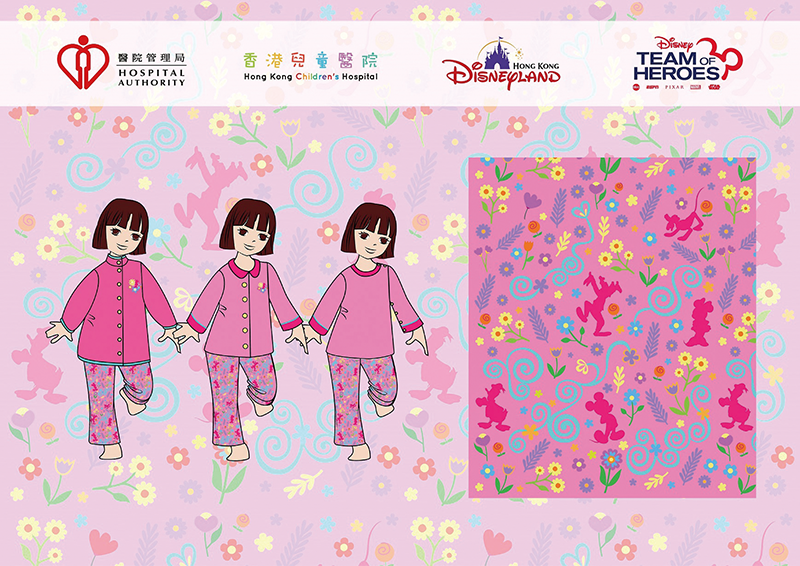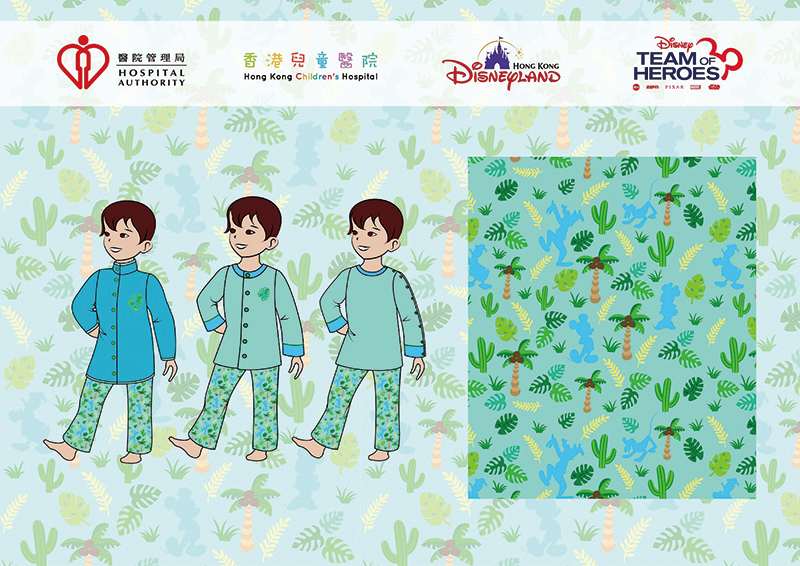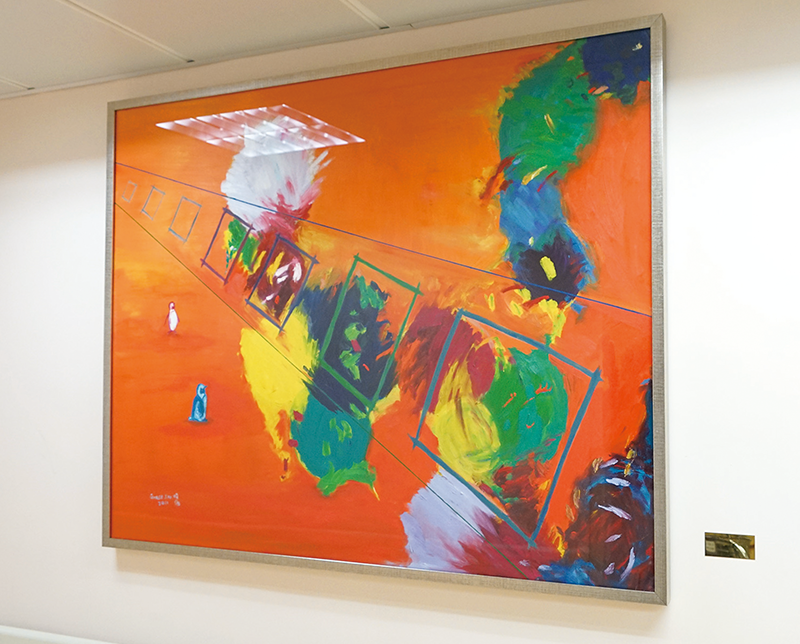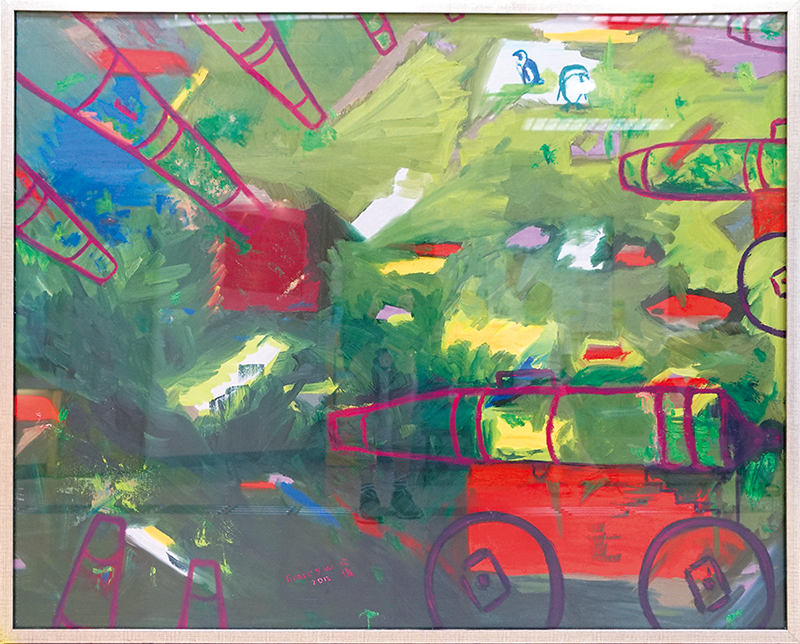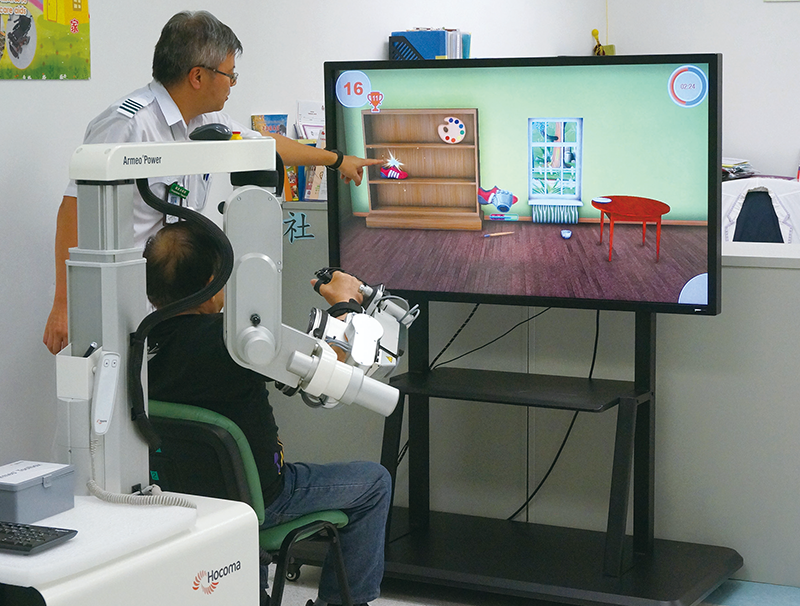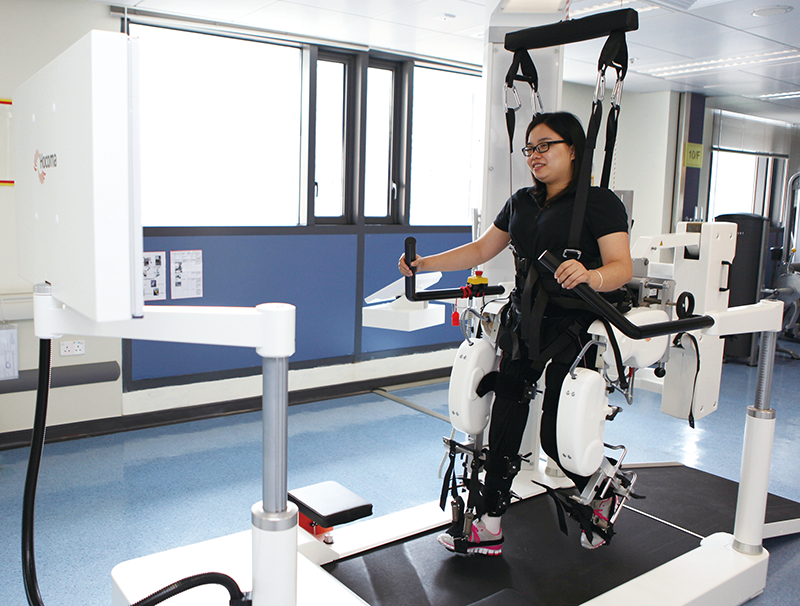Where do donations go?
Love and support of donors fill the collection boxes of Hospital Authority (HA). Donations do not only come in cash but also in kind, for example, estate, artwork, medical device and hospital facility. As the old proverb says ‘many a little makes a mickle’, let’s take a look at how some of the donations directly benefit patients and improve public healthcare services.
Kids ‘dress well’ to fight disease
The ‘Dress Well’ project of Hong Kong Children’s Hospital is one of the many measures created to improve inpatient experience of sick kids. Supported by HK$4.1 million donation by The Walt Disney Company, it covers the design and production of 26,000 pieces of patient clothes. The designs combine visual appeal, comfort and functionality. Wearing patient clothes with familiar Disney cartoon characters overprint, it is hoped that the paediatric patients would feel less lonely with love, care and hope in the treatment journey.
Click here to see how sick kids ‘Dress Well’.
Electric climbing chairs for patients
Mr Chan (pseudonym) has mobility difficulties. He saw a lot of patients who have similar problems when he attended follow-up consultations in hospital. The situation is particularly hard for those living in old buildings which have no lifts. So Mr Chan donated HK$400,000 to enhance the non-emergency ambulance transfer service (NEATS) in Kowloon Central Cluster (KCC). With that amount, KCC will acquire three electric climbing chairs and four specialised stretchers for NEATS to transfer bed-bound patients and also patients who live in old buildings without elevators. With the new facilities, it is estimated that over 20,000 patients benefit every year.
Paintings to heal
Paintings can heal and purify mind and soul. They also add colours to hospital environment. A donor gave the vivid and vibrant-coloured drawings of his late wife to HA hoping to encourage and comfort patients. Two of the drawings are displayed at Ambulatory Care Centre of Queen Elizabeth Hospital, four at the canteen of Caritas Medical Centre, and six are exhibited at several locations of Prince of Wale Hospital including Cancer Patient Resource Centre, Ambulatory Cancer Care Centre and Clinical Oncology Ward.
Leaving a lasting legacy of love
Many patients choose to be a guardian angel of the less fortunate by leaving a lasting legacy of love to society. Donation of estate is one way to pass on blessing and love to other patients in need. Of these, Ms Hung, who was the relative of cancer patients, donated HK$1.4 million to the Department of Clinical Oncology of Prince of Wales Hospital from the estate of her late mother and sister to help other patients. Her donation was used for the purchase of Stereotactic Radiotherapy Treatment Planning System for Brain Tumors and Verification System of Stereotactic Radiotherapy for Brain Tumors.
In addition, Ms Wong (pseudonym), who stayed in the rehabilitation and extended care ward of TWGH Wong Tai Sin Hospital for many years, donated HK$1 million from her estate to the department to express her gratitude to the care of medical workers. The amount was used to upgrade the equipment of the ward, such as mattress and trolleys, to provide a comfortable environment for other patients.
New equipment strengthens rehabilitation training
Assembling donations from various charities, the Hospital Authority Charitable Foundation (HACF) disburses on many medical service enhancement projects in public hospitals. Of these, HACF supported the installation of Robotic Assisted Therapy Systems in hospitals between 2013 and 2015. Benefitting hospitals include The Duchess of Kent Children’s Hospital at Sandy Bay, Kowloon Hospital, Tai Po Hospital, Tuen Mun Hospital, Tung Wah Hospital and United Christian Hospital. Neurological trauma patients can receive rehabilitation training in a safe and controlled environment to improve mobility, self-care ability and quality of life.
Moreover, Robotic Arm Therapy System has been acquired with the support of HACF for Pok Oi Hospital in 2016/17. Patients who suffer from upper limb dysfunction caused by stroke, nervous system impairment or limb impairment can receive intense and repetitive upper limb training using advanced technology, and improve the effectiveness of rehabilitation. Patients with neurological diseases can also benefit from using the system.
● Load ammunition for the flu battle
COVER STORY
● 10 open dialogues on flu vaccination
● 5 examples of vaccination for healthcare workers: a global view
● 8 GVP ambassadors promote vaccination amongst staff
HELEN HA
● Sammy Leung: Blood donation is like puppy love
● Go for ‘HA Go’ app icon design contest!
PEOPLE
FEATURE
● Pets spread loving care in hospital
● Dog volunteers bring joy to sick kids on Christmas day
WHAT'S NEW
● Patient experience survey improves service quality
● Elders stay active and smart through cognitive stimulation
STAFF CORNER

